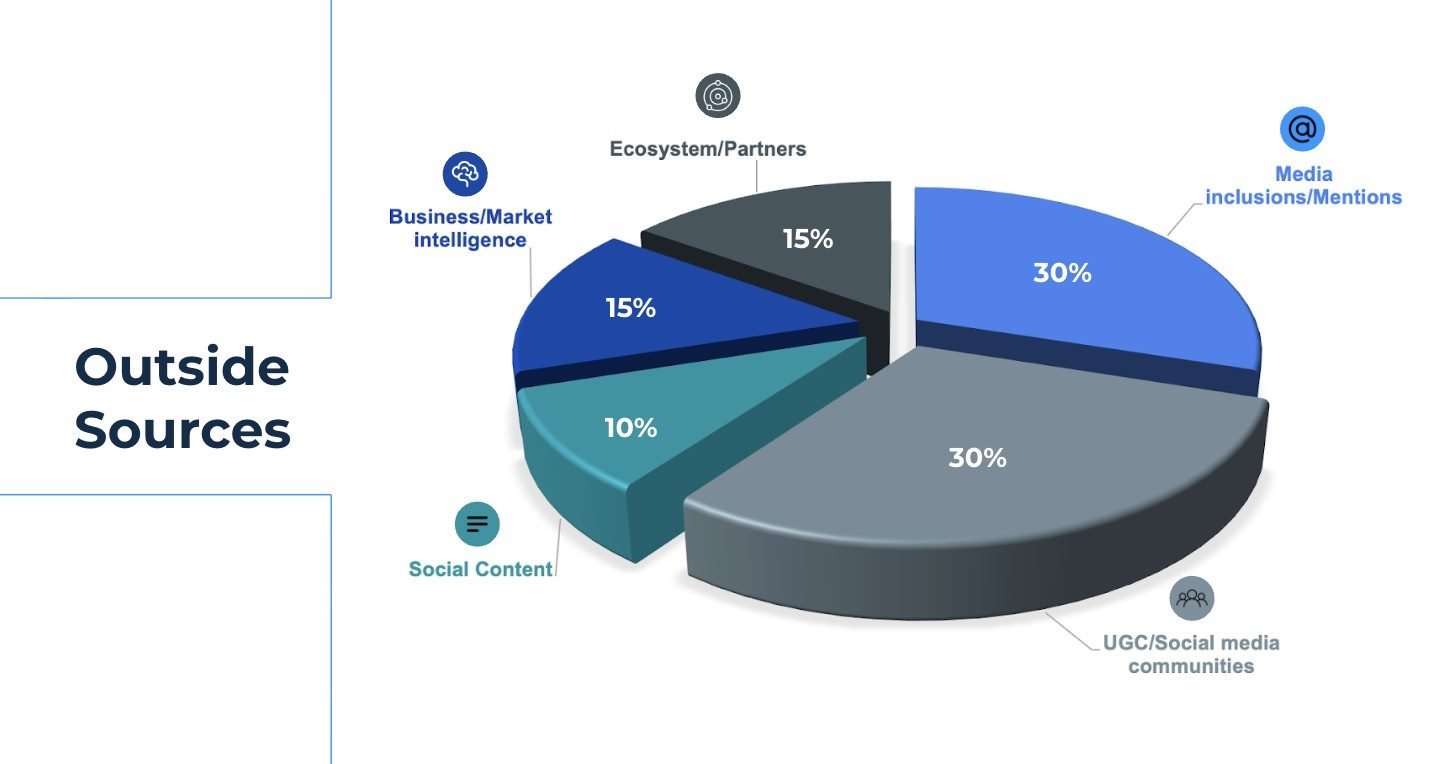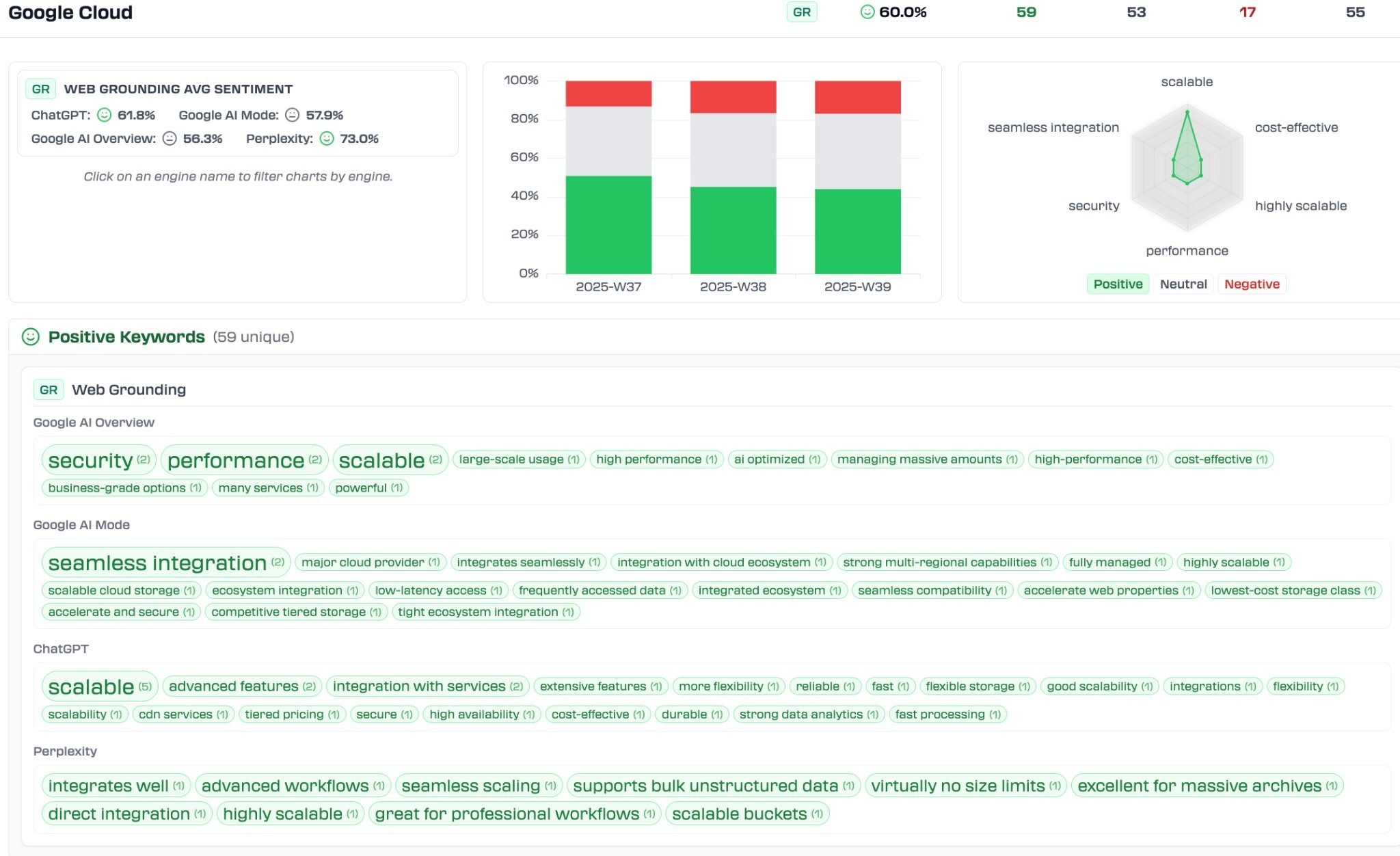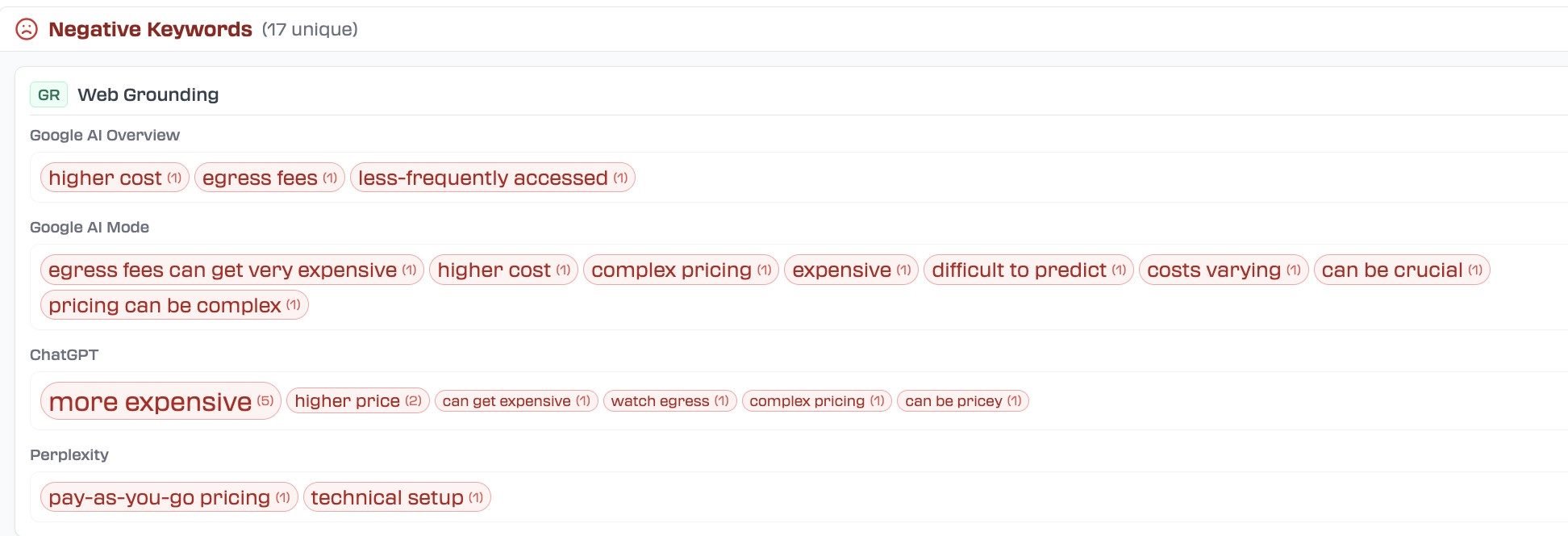The Gist
- Beyond visibility. LLM ranking is only step one — CMOs should use Answer Engine Optimization (AEO) and Generative Engine Optimization (GEO) as lenses for smarter go-to-market (GTM) planning.
- Audit to prioritize. By analyzing how brands and competitors appear across ChatGPT, Gemini, and other LLMs, marketing teams can identify which media, communities, and partnerships most influence AI-driven discovery.
- From data to direction. LLM insights can inform 2026 strategies across content, PR, community, and partner ecosystems — turning visibility into actionable market intelligence.
Buyers are increasingly turning to large language models (LLMs) like ChatGPT, Perplexity, Gemini and Google’s AI Overviews for answers. Capturing their attention through LLM visibility is important — but it’s only part of the story.
The real opportunity for CMOs is to treat AEO (Answer Engine Optimization) and GEO (Generative Engine Optimization) not simply as ranking tactics, but as powerful lenses for market intelligence. By auditing how your brand, competitors and solutions surface across LLMs, you can identify where to focus investments across media, community, content and partnerships.
Done well, LLM visibility audits don’t just inform SEO strategy — they shape an integrated 2026 GTM playbook.
Here’s the B2B CMO’s Roadmap for Using AEO/GEO to prioritize brand and marketing investments in 2026:
Table of Contents
- Step 0: Establish Your Ground Zero with LLM Audits
- Step 1: Apply an Integrated Sources Lens
- Step 2: How to Make the Most of Each Category Source
- Step 2a: The Role of Media Visibility Audits
- Step 2b: Communities Are Getting Hotter Again
- Step 2c: Turn Review Sites into a Competitive Weapon
- Step 2d: Leverage Social Content Platforms in 2026
- Step 2e: Strengthen Business and Market Intelligence Signals
- Step 2f: Double Down on the Ecosystem Partnerships that Matter
- Step 3: Pulling it all Together: the AI-informed 2026 B2B Tech GMT
- From AEO/GEO Audit to 2026 Market Advantage
Step 0: Establish Your Ground Zero with LLM Audits
LLM audits help determine priorities between your owned content and external channel investments. The key is to map customer journeys carefully and design prompt categories to benchmark your brand’s visibility.
From there, use Entity Analysis (identifying and categorizing key objects or concepts) and NLP Frequency Analysis (tracking the most common terms and themes) to evaluate how well your content performs versus competitors. The gaps will show you where to double down on content development.
Step 1: Apply an Integrated Sources Lens
Marketers testing LLM visibility tools are often captivated by the Sources or Citations tab. Tools like Am I on AI and Peec AI reveal not just which outlets appear in LLM responses, but also their relative weight by category (media, communities, social, etc.).
The strategic value lies in prioritizing which source categories matter most for your GTM plan — and then aligning investments accordingly.

Step 2: How to Make the Most of Each Category Source
Outside B2B tech sources fall under these key categories:

Step 2a: The Role of Media Visibility Audits
By leveraging your topics and prompts, you and your teams can prioritize which media outlets to target (aka your bullseye media list). These outlets are not only important for improving your LLM visibility – they are also what your buyers are using to inform themselves across their buyer journey.
Here’s a peek at the media insights Am I on AI can provide:

Why it matters: Media outlets continue to play an outsized role in seeding citations into LLM responses, and in influencing buyer behavior.
Actions to take:
- Focus on the top publications that have the highest impact.
- Audit which publications are currently surfacing your competitors but not you.
- Pitch and contribute thought leadership that aligns with the topics that matter to your business and the LLMs.
How to measure success: Be specific in your targets. Go small but targeted (e.g. start with 10 publications, secure placements in 3). Measure how well you show up for the specific prompts and topic areas after publication.
Related Article: Is Universal Search Optimization Queen in New SEO Landscape?
Step 2b: Communities Are Getting Hotter Again
Yes, Reddit leads the pack. You can’t escape a GTM conversation these days without Reddit being a core part of it. In fact, popular and niche communities, especially for developer brands such as Qdrant and Vultr, are becoming a growing GTM channel.
Why it matters: Communities are not only becoming high-signal inputs for generative models; they are also becoming more influential for developers and engineers looking for vetted platforms and solutions. Reddit threads, developer forums and technical communities increasingly shape what shows up in AI answers.
Actions to take:
- Audit all communities that influence LLM ranks. Vet them for fit and purpose. Determine which communities you will double down on and from there, apply the tried-and-true PESO model (paid, owned, earned and shared). In other words, invest in communities in an integrated fashion, not just because you want your brand to show in a specific prompt.
- Most importantly, create an authentic presence on user-generated content (UGC) forums (such as Reddit and Discord) and commit to them long term
- Use the AEO/GEO tools to feed you suggestions on incremental improvements month over month.
How to measure success: For LLM visibility specifically, aim to consistently engage in at least three communities, and track measurable increase in citation frequency.
Step 2c: Turn Review Sites into a Competitive Weapon
While review sites can be viewed as cousins to communities, they require their own consistent attention (though not as engaged as the one required for community participation). Review platforms, such as G2, Capterra and TrustRadius, frequently surface in LLM outputs. Your relative ranking and review quality can tip buyer perception.
Actions to take:
- Audit your presence across major review sites and long-tail platforms (e.g., vpsbenchmarks.com, hostingseekers.com).
- Encourage customer reviews that highlight differentiators tied to strategic categories.
- Track competitor presence to identify gaps.
Step 2d: Leverage Social Content Platforms in 2026
Why it matters: LLMs pull heavily from high-volume content hubs like LinkedIn, Medium, Substack and YouTube. These platforms are your opportunity to seed category narratives and shape buyers criteria and preferences. Here, again, your team would benefit from applying a wider lens. Your decision on how you show up in Medium or Substack needs to be tied to how your customers use these platforms. If you over-indexed on just LLM visibility, you may be missing the forest from the trees.
Actions to take:
- Vet each platform for reach and engagement.
- Align social publishing with category, use case and competitive topics from your Entity and NLP Frequency analysis. This will pay back across multiple tracks, including better reach and engagement with your customers and increased visibility across the LLMs.
- Launch a thought leadership cadence across LinkedIn and Substack, backed by video amplification on YouTube.
- Repurpose UGC or niche community learnings into owned and social content.
How to measure success: Along with increased appearance rates in LLMs by tracking owned content citations quarterly, track pipeline influence from these sources as well.
Related Article: X, Meta and the Great Social Media Meltdown
Step 2e: Strengthen Business and Market Intelligence Signals
Why it matters: Profiles on platforms like Wikipedia, Crunchbase and VentureRadar often serve as source-of-truth references in generative engines as well as for customers, analysts and investors. Weak or outdated entries can cost visibility.
Actions to take:
- Audit your organization’s presence across business and data intelligence platforms.
- Update profiles with accurate product positioning, customer metrics and differentiators.
- Where absent, establish entries to ensure your brand appears in foundational data layers.
Step 2f: Double Down on the Ecosystem Partnerships that Matter
Why it matters: Partner ecosystems add credibility across every aspect of your marketing and sales, and luckily, LLMs will also recognize and surface content from them.
Actions to take:
- Identify high-impact current partners and partners-to-be.
- Update your market development funds (MDF) conversations with partners. Invest in content development that you can seed through your own websites and through the newly informed outside sources or channel mix you can jointly invest into.
- Invite partners into your communities to multiply footprint and impact.
Step 3: Pulling it all Together: the AI-informed 2026 B2B Tech GMT
You have probably guessed it by now, but LLM tools are becoming an invaluable GTM partner for savvy B2B tech marketing teams. Your 2026 big bets not only can but should be informed by the right LMM insights. Your strategic measurement should be tied to the following key areas of investment:
Brand Benchmarking: How is your brand sentiment trending, both positive and negative, relative to competitors? Where do your customers see you excel and where do you come up short? How do your competitors compare?
Equipped with this knowledge, you may even be able to bypass the planned annual brand awareness study and focus on making your strengths even stronger and turning your neutral perceptions into your positives.
Sentiment Dashboard Example - via Rankscale


Content Strategy: Which big bets will shape your category narrative, and what cadence of weekly content (on your site, LinkedIn, Substack, Medium, etc.) will sustain it?
PR and Thought Leadership: Which narratives, topics, and POVs earn citations in LLM responses, and which publications will influence AI-generated visibility?
Community Engagement: Which communities matter most, and how should you show up and participate?
Ecosystem Growth: Which partners and platforms reinforce your credibility, and where should you expand?
From AEO/GEO Audit to 2026 Market Advantage
The interplay between AEO and SEO is important, but it’s only one aspect of the bigger picture. By auditing, prioritizing and investing systematically, CMOs can leverage the full capabilities of LLM visibility as a strategic lens that guides content bets, sharpens PR, expands ecosystems and delivers a stronger pipeline.
The winners in 2026 won’t just capture buyers inside LLMs; they’ll use AEO/GEO benchmarking to make smarter GTM bets everywhere.
Learn how you can join our contributor community.
